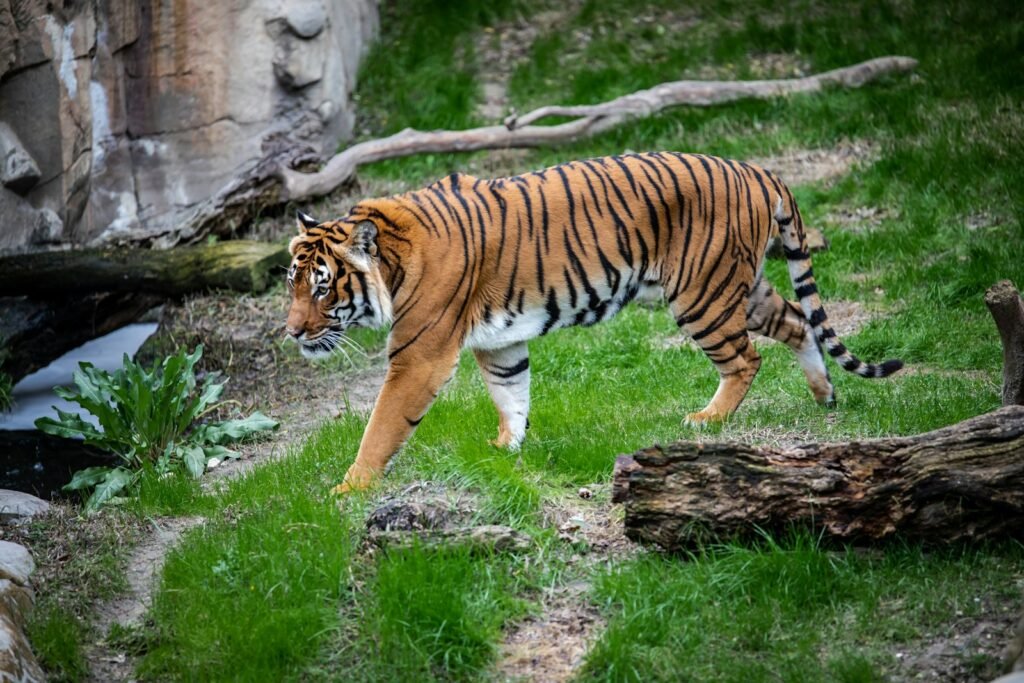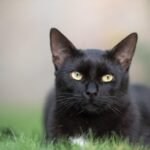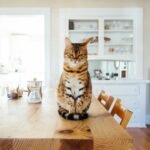Big cats, including lions, tigers, leopards, jaguars, cheetahs, and snow leopards, are some of the most fascinating creatures in the animal kingdom. These majestic animals have evolved over millions of years and adapted to a variety of habitats across the globe. Each species has developed unique adaptations that enable it to thrive in its environment, from the rainforests of South America to the harsh, cold mountains of Central Asia.
Physical Adaptations Specific to Habitats

Each big cat has evolved specific physical traits to help it survive in its environment. For example, the snow leopard has thick fur, long-bodied proportions, and a hefty tail for balance and warmth, facilitating survival in cold mountainous regions. Meanwhile, the tiger’s camouflage stripes help it blend seamlessly into forest and grassland settings, making it an effective stealth hunter.
Dietary Adjustments and Hunting Techniques

The diet of big cats is largely influenced by their habitat. Tigers that inhabit dense forests primarily hunt deer and boar, relying on their stealth and strength. Cheetahs, the fastest land animals, live in open savannas, where they use their incredible speed to outrun prey like gazelles. These dietary habits illustrate how big cats adapt their hunting techniques to their surroundings.
Behavioral Adaptations to Environment

Big cats exhibit a range of behaviors adapted to their specific habitats. Lions, for example, are the only social big cats, living in groups called prides that hunt cooperatively to manage the vast African savanna. Solitary jaguars, native to Central and South American rainforests, use their powerful jaws to hunt and swim in waterways, highlighting their unique survival strategies.
Communication Strategies

Communication among big cats is essential for survival, with strategies varying widely depending on the species and habitat. Lions use vocalizations like roars to communicate within the pride across the open savanna, while leopards rely more on scent markings and subtle visual cues due to the dense forests they inhabit.
Thermoregulatory Adaptations

To manage the varying temperatures of their habitats, big cats have evolved specific thermoregulatory adaptations. Siberian tigers possess a thick coat that provides insulation against the cold, while cheetahs have thin coats and the ability to dissipate heat quickly through panting after a high-speed chase in the hot African plains.
Reproductive Strategies in Different Environments

Reproductive strategies of big cats also reflect their environmental adaptations. For instance, lions’ strategy of living in prides supports cooperative care of cubs, maximizing survival rates in open habitats teeming with potential threats. In contrast, solitary big cats like leopards and tigers invest heavily in teaching and nurturing their cubs individually to survive in difficult terrains.
Human-Wildlife Conflicts and Conservation Efforts

Human activities have increasingly impacted the habitats of big cats, leading to conflicts and endangering survival. To address this, wildlife conservation efforts are crucial. Initiatives include creating protected areas, anti-poaching measures, and community engagement programs designed to mitigate conflicts and promote coexistence.
Climate Change Challenges

Climate change poses significant challenges to big cat habitats, altering prey availability and habitat conditions. Snow leopards, for example, face a shrinking range due to melting snow caps. Understanding and mitigating these impacts are critical to ensuring the survival of these species in a rapidly changing world.
The Role of Ecological Research

Continuous ecological research plays a vital role in understanding how big cats adapt to their environments. By studying their behavior, genetics, and interactions with the ecosystem, scientists can develop more effective conservation strategies that address the challenges these magnificent creatures face today.

Suhail Ahmed is a passionate digital professional and nature enthusiast with over 8 years of experience in content strategy, SEO, web development, and digital operations. Alongside his freelance journey, Suhail actively contributes to nature and wildlife platforms like Feline Fam, where he channels his curiosity for the Feline into engaging, educational storytelling.
With a strong background in managing digital ecosystems — from ecommerce stores and WordPress websites to social media and automation — Suhail merges technical precision with creative insight. His content reflects a rare balance: SEO-friendly yet deeply human, data-informed yet emotionally resonant.
Driven by a love for discovery and storytelling, Suhail believes in using digital platforms to amplify causes that matter — especially those protecting Earth’s biodiversity and inspiring sustainable living. Whether he’s managing online projects or crafting wildlife content, his goal remains the same: to inform, inspire, and leave a positive digital footprint.






